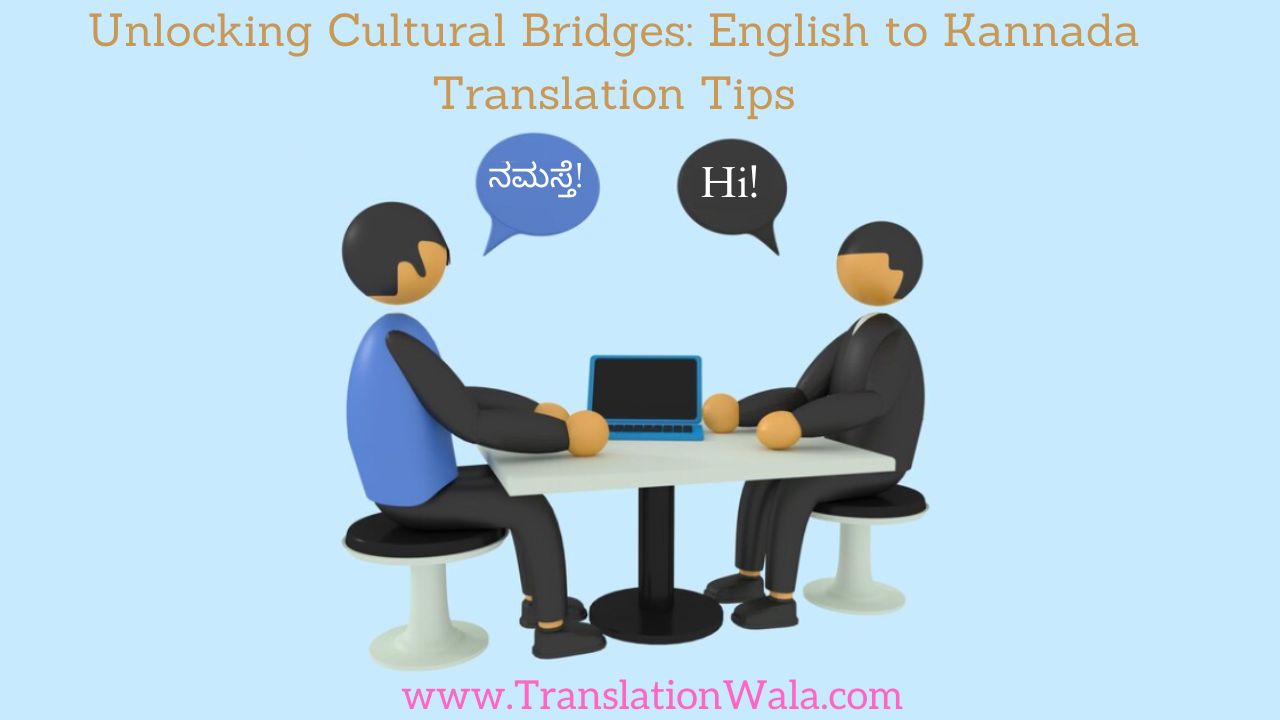The main language of the Indian state of Karnataka is Kannada, a lively Dravidian language that more than 43 million people speak around the world. Kannada has a rich literature history and unique cultural details that make English to Kannada Translation both interesting and hard. This blog talks about how to bridge the cultural gap and get an accurate Kannada version that sounds natural.
Understanding the Context: Beyond the Words
Simply changing words from one language to another won’t make the translation work well. It’s very important to understand what the source book is about. Take into account the original English content’s goal, audience, and tone. For example, when translating a business paper, you need to be serious and accurate, but when translating a children’s story, you need to be more casual and fun.
It’s just as important to understand the culture meanings in English texts. A lot of idioms, proverbs, and jokes don’t have clear translations in Kannada. A good translator will be able to spot these things and find options that are more acceptable for the Kannada audience.
Embrace the Nuances of Kannada
Kannada has a large language, and words can mean very different things. To choose the best Kannada word, translators need to have a deep understanding of these subtleties. What does the English word “happy” mean in Sanskrit? It could mean “santhosta” (contentment), “ananda” (joy), or “hushar” (enthusiasm), based on the situation.
Kannada language is also hard in its own way. There is a complicated system of word conjugations that depend on the person, gender, mood, and honorifics. Translators have to make sure that the words they write are correct in terms of grammar and run easily in Kannada.
Also Read: Resonating Voices: The Craft of English to Bengali Translation

Localization: Tailoring the Message for Kannada Audience
A lot of the time, direct translation makes words sound strange and not smooth. Key is localization, which means changing the material so that it fits with the target society. A good English to Kannada Translation will adapt the message to the Kannada audience by using slang, idioms, and references that they are familiar with.
For example, when changing recipe directions, measures like “cups” and “ounces” might need to be changed to their Kannada versions or items that aren’t common in the language might need to be replaced with ones that are.
Mind the Formalities: Respecting Hierarchy and Social Cues
Respect and social order are very important in Kannada society. When translating serious papers or conversations, translators need to keep these details in mind. To show respect for adults, bosses, or people in power, you can use honorifics, certain word conjugations, and even the way you put together your sentences.
For instance, when translating a business email, a translator might use a more polite greeting and different word forms when talking to a boss than when talking to a coworker.
Tools and Resources for Using the Power of Technology
Even though human knowledge is still very important, technology can help interpreters a lot. Machine translation tools can give you a general idea of what something means, but they often have trouble with cultural details and the bigger picture.
Use online Kannada dictionaries and glossaries to check your word choices and find words that are similar but more acceptable for the culture. For correct translations in scientific fields, terminology sources that are specific to those areas can be useful.
Proofreading and Revision: Ensuring Accuracy and Fluency
Before the Kannada version is finalized, it needs to be carefully checked and changed. This step makes sure that the grammar is correct, that the writing flows naturally, and that the tone and style are followed.
You might want to have a native Kannada speaker look over the translation to find any mistakes or awkward language.
If translation follow these tips and use cultural understanding to their advantage, they can make sure that communication is clear, accurate, and respectful to different cultures. Remember that a good English to Kannada Translation does more than just send words; it also gets the idea across and helps people from different countries understand each other.



